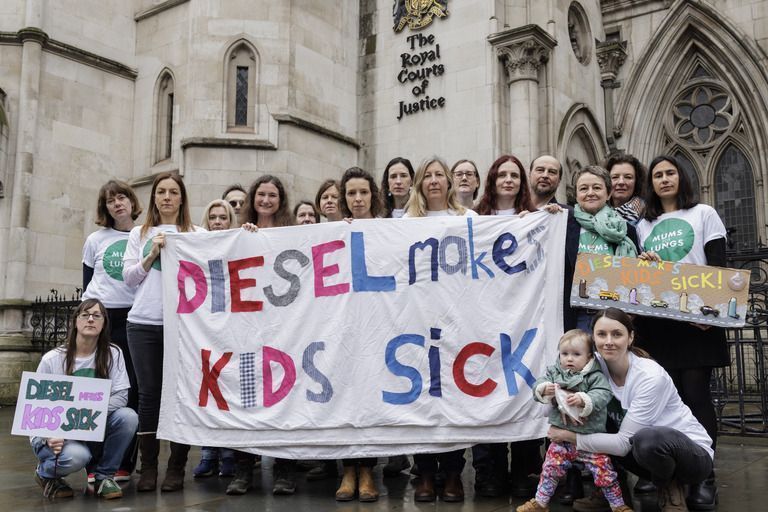

contains known #carcinogenic compounds (type 1 carcinogens) www.dsawsp.org/resources/wo...
It's a science adventure from the work of AQEG to net zero, health gains from air pollution actions, UFP, shipping, inequalities in exposure the ULEZ and more.
www.rsc.org/events/detai...

It's a science adventure from the work of AQEG to net zero, health gains from air pollution actions, UFP, shipping, inequalities in exposure the ULEZ and more.
www.rsc.org/events/detai...
Learn more about our retrofit project in partnership with @clasp-ngo.bsky.social:
www.globalactionplan.org.uk/clean-air/ga...
#CleanAir #NetZero #Cooking

Learn more about our retrofit project in partnership with @clasp-ngo.bsky.social:
www.globalactionplan.org.uk/clean-air/ga...
#CleanAir #NetZero #Cooking
Learn more about Ella's Law from her mother, Rosamund Adoo-Kissi-Debrah: https://www.youtube.com/watch?v=5xDn-UZQN-U

Learn more about Ella's Law from her mother, Rosamund Adoo-Kissi-Debrah: https://www.youtube.com/watch?v=5xDn-UZQN-U
Did you know that burning wood produces benzene, formaldehyde, arsenic, mercury (& more)?
Help us protect Father C's lungs; please don't burn if you don't need to 🙏 .
www.dsawsp.org/health/wood-...

Did you know that burning wood produces benzene, formaldehyde, arsenic, mercury (& more)?
Help us protect Father C's lungs; please don't burn if you don't need to 🙏 .
www.dsawsp.org/health/wood-...
Thank you to Florence and @waseemzaffar.bsky.social




Thank you to Florence and @waseemzaffar.bsky.social
We're offering our Christmas cards again this year - please join us in sending season's greetings while sharing facts and tips on how to reduce #AirPollution. You can order yours at the link.

We're offering our Christmas cards again this year - please join us in sending season's greetings while sharing facts and tips on how to reduce #AirPollution. You can order yours at the link.
63% of British adults don't.
Where illegal activity is shown by the #Dieselgate trial, the Government needs to enforce recalls, paid for by manufacturers. @clientearth.bsky.social

63% of British adults don't.
Where illegal activity is shown by the #Dieselgate trial, the Government needs to enforce recalls, paid for by manufacturers. @clientearth.bsky.social
#AirPollution #WoodBurning #Health #Environment
www.ricardo.com/en/news-and-...

#AirPollution #WoodBurning #Health #Environment
www.ricardo.com/en/news-and-...
Read my Substack analysis:
👉 scrapcc.org/KEADBY-RR-SST
Full technical submission to planning inspectors:
👉 scrapcc.org/KEADBY-RR
We need real clean power — not hydrogen-washed gas.

Read my Substack analysis:
👉 scrapcc.org/KEADBY-RR-SST
Full technical submission to planning inspectors:
👉 scrapcc.org/KEADBY-RR
We need real clean power — not hydrogen-washed gas.


When looking, have you thought about #AirPollution and the impact of how you travel to a particular school?
Can you choose a school you can walk, scoot, cycle or wheel to? You'll be making that journey around 2,730 times over the next 7 years!
When looking, have you thought about #AirPollution and the impact of how you travel to a particular school?
Can you choose a school you can walk, scoot, cycle or wheel to? You'll be making that journey around 2,730 times over the next 7 years!
We're offering our clean air themed Christmas cards again this year - please join us in sending season's greetings while sharing facts and tips on how to reduce #AirPollution. You can order yours at the link.

We're offering our clean air themed Christmas cards again this year - please join us in sending season's greetings while sharing facts and tips on how to reduce #AirPollution. You can order yours at the link.
#AirPollution #Health #Environment
airqualitynews.com/headlines/fu...

#AirPollution #Health #Environment
airqualitynews.com/headlines/fu...
PM2.5 alone is estimated to cause over 13,000 deaths from ischaemic heart disease & stroke annually & contributes to more than 1m yrs of life lost each year.
#Environment
airqualitynews.com/headlines/on...

PM2.5 alone is estimated to cause over 13,000 deaths from ischaemic heart disease & stroke annually & contributes to more than 1m yrs of life lost each year.
#Environment
airqualitynews.com/headlines/on...





#carbonmonoxide
#airpollution

#carbonmonoxide
#airpollution
Here are some facts about why an active school run is the way to go:
www.mumsforlungs.org/news/make-th...

Here are some facts about why an active school run is the way to go:
www.mumsforlungs.org/news/make-th...
We’re urging the Mayor to speak up about #WoodBurning in London, right now.


We’re urging the Mayor to speak up about #WoodBurning in London, right now.
#Dieselgate car manufacturers have never properly been held to account in the UK.
Let's change that. Sign and share! #AirPollution

#Dieselgate car manufacturers have never properly been held to account in the UK.
Let's change that. Sign and share! #AirPollution
#AirPollution #Environment #Health
airqualitynews.com/cars-freight...

#AirPollution #Environment #Health
airqualitynews.com/cars-freight...
[email protected]
www.theguardian.com/environment/...

[email protected]
www.theguardian.com/environment/...
Please do sign up to our newsletter to stay in touch with the latest air pollution news, find out about our campaigns and how you can get involved.

Please do sign up to our newsletter to stay in touch with the latest air pollution news, find out about our campaigns and how you can get involved.


